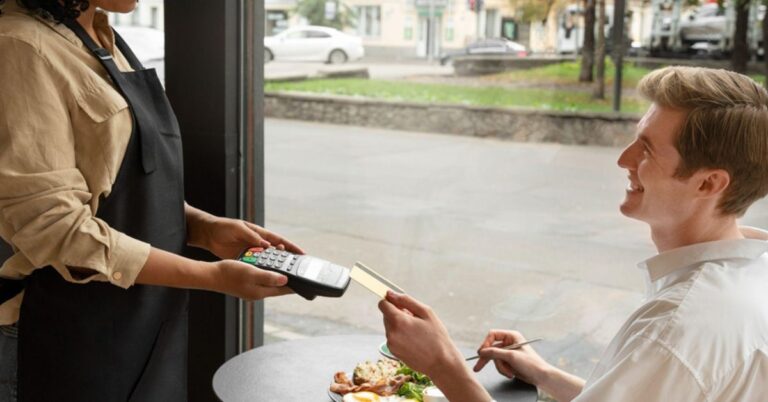Walk into any modern fast-food joint or café in 2025, and chances are you’ll spot it—the glowing screen waiting patiently and invitingly to take your order. What once felt like a novelty has become part of our everyday dining experience. But here’s the surprising twist: far from making things cold or impersonal, the restaurant self service kiosk is quietly adding more warmth, choice, and personalisation to our meals.
This shift isn’t just about speed or automation. It’s about elevating the customer experience in ways that traditional counter service can’t always manage. From letting people order at their own pace to reducing awkward communication barriers, kiosks prove that tech doesn’t have to feel techy—it can feel human.
Why Are We Moving Towards Self-Service?
We all know how it feels when we ask ourselves how it happens. The line is long, everyone needs their food quickly, and it feels like everyone is eagerly waiting as you order. Maybe you’ve been the one serving customers, dealing with clumsy workers, rushed orders, and the challenges of lunch hour.
These self-service kiosks in restaurants make things much easier and simpler than expected. Customers can order at their own pace, find new things, change components for their meals, and finish the process without being told to hurry. It feels like taking a moment to slow down a fast-paced activity.
How Choices Affect Perception
An exceptional quality of a restaurant self-service kiosk is that it offers personalisation, which is a challenge many fast-casual restaurants face. Make it Gluten-Free, Vegan, extra cheesy, pickle-free, or with just a little bit of dressing, and making your custom order at the kiosk is trouble-free.
Kiosks eliminate the translation problem that can happen with spoken language. You can view the food you want to eat before placing an order. There will be fewer wrong or missing orders, greater customer satisfaction, and less food going to waste.
Due to personalisation, it becomes easier for hotels and restaurants to promote extra services. How about ordering a beverage or tasting the latest flavour of the day? If a kiosk is kind in its request, people find it easier to agree and are less influenced by their surroundings.
Improving Inclusivity & Accessibility
Although technology is frequently blamed for being impersonal, well-designed kiosks can be more inclusive than conventional counter service. Think about this:
- Interfaces with multiple languages make non-native speakers feel more comfortable.
- Customers who are neurodivergent or have hearing issues benefit greatly from visual menus.
- Wheelchair users find it easier because of the accessible design and adjustable screen heights.
- Customers gain respect from all these aspects, which is more significant than speed. It’s a fundamental aspect of hospitality.
Giving Employees the Freedom to Do What They Do Best
The question of whether installing a kiosk will result in fewer jobs is where the discussion frequently becomes complex.
Not always.
Many restaurants using restaurant self service kiosks have found they can redeploy staff to more customer-focused roles—greeting guests, handling special requests, and improving the overall atmosphere. Instead of being stuck behind a till, employees can spend more time being the friendly, helpful face of the business.
As a result, workers could experience less burnout, as stress levels are high when things get busy. Since much of the work is done by kiosks, employees can put their efforts into talking to people.
Real-Time Feedback & Smarter Operations
This is another great thing for restaurants. Data. Like people, a kiosk can gather and use information to help you.
Following what items are popular, when customers visit most, and their buying preferences can enable restaurants to create better operations. Are you curious about which burger is being served most often during lunches? Or how many extra team members are needed for a Friday night in the dining room? A self-service kiosk in the restaurant provides that information.
Specific platforms allow diners to review their experience instantly, which most people wouldn’t do in a restaurant. RSS feeds are subtle, sincere, and very helpful for following news.
Go For a Design That Seems Simple and Comfortable
Kiosks are successful because they are simple to work with. A great design fits seamlessly with its surroundings and does not want to stand out. Today, touchscreens on kiosks are modern, straightforward, and styled to help anyone, including those unfamiliar with technology.
Last year, AI-powered kiosks began guiding customers by recommending famous combos or suggesting what they usually get based on their history. Rather than being pushy, they simply pointed customers in the right direction. That’s how you make your technology seem more like speaking with someone than bossing it around.
Final Thoughts
Self-service kiosks in restaurants aren’t just machines—they’re a quiet revolution in how we experience dining. By putting control back into the hands of the customer and freeing staff to focus on genuine service, kiosks make the whole experience feel more tailored, more accessible, and yes, more human.
In a world where hospitality is often overlooked in the race for efficiency, that might be the most valuable upgrade.

